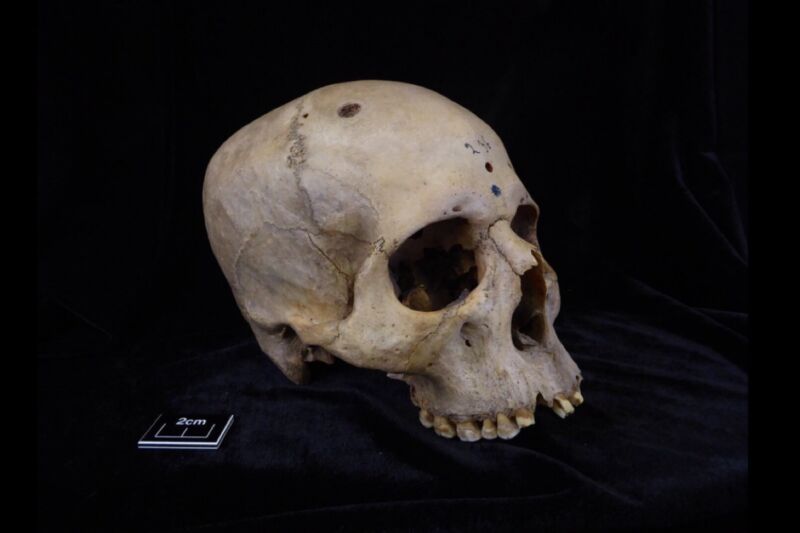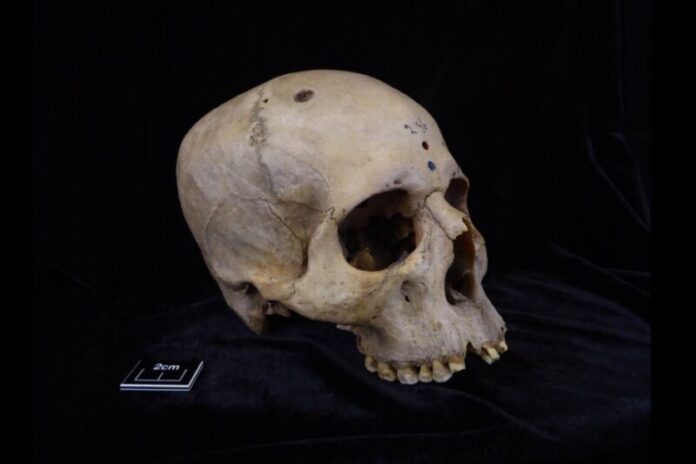
Enlarge (credit: Tondini, Isidro, Camarós, 2024.)
The 4,000-year-old skull and mandible of an Egyptian man show signs of cancerous lesions and tool marks, according to a recent paper published in the journal Frontiers in Medicine. Those marks could be signs that someone tried to operate on the man shortly before his death or performed the ancient Egyptian equivalent of an autopsy to learn more about the cancer after death.
“This finding is unique evidence of how ancient Egyptian medicine would have tried to deal with or explore cancer more than 4,000 years ago,” said co-author Edgard Camarós, a paleopathologist at the University of Santiago de Compostela. “This is an extraordinary new perspective in our understanding of the history of medicine.”
Archaeologists have found evidence of various examples of primitive surgery dating back several thousand years. For instance, in 2022, archaeologists excavated a 5,300-year-old skull of an elderly woman (about 65 years old) from a Spanish tomb. They determined that seven cut marks near the left ear canal were strong evidence of a primitive surgical procedure to treat a middle ear infection. The team also identified a flint blade that may have been used as a cauterizing tool. By the 17th century, this was a fairly common procedure to treat acute ear infections, and skulls showing evidence of a mastoidectomy have been found in Croatia (11th century), Italy (18th and 19th centuries), and Copenhagen (19th or early 20th century).
Read 10 remaining paragraphs | Comments
Ars Technica - All contentContinue reading/original-link]




